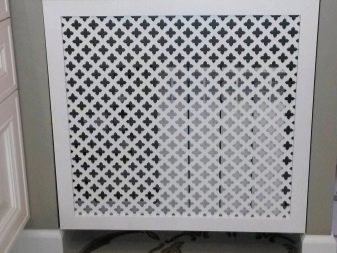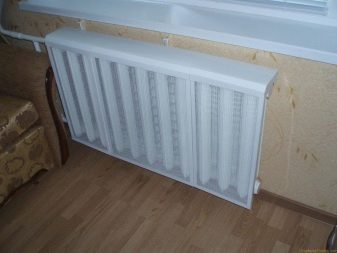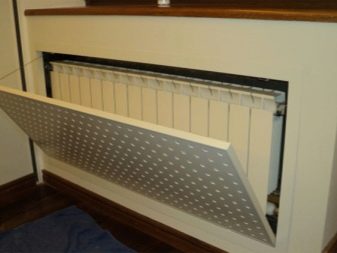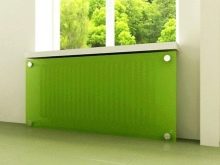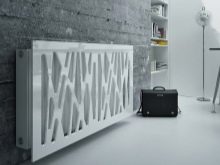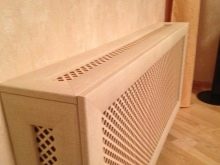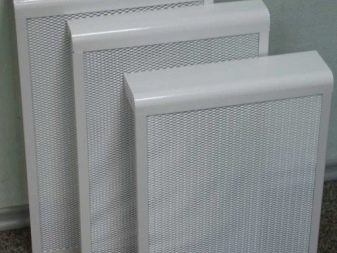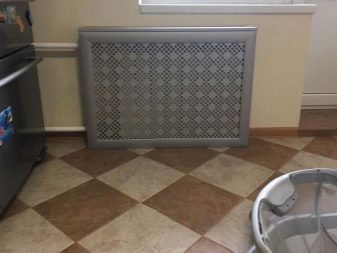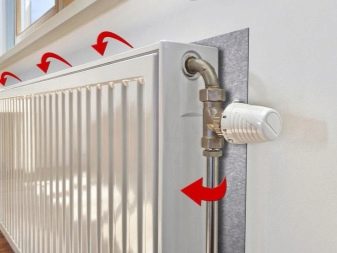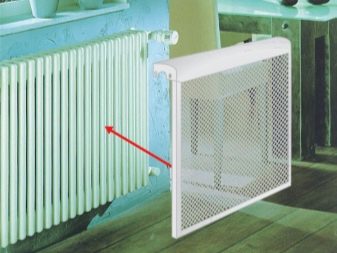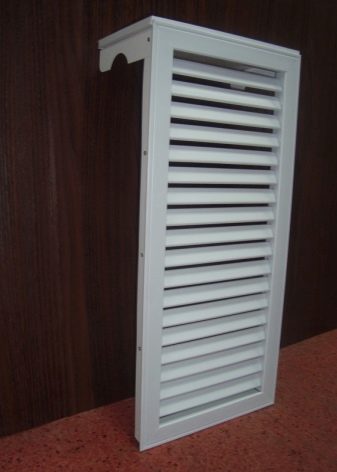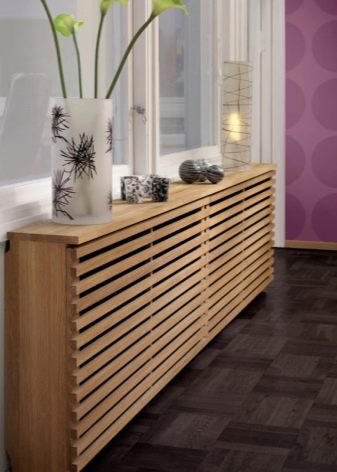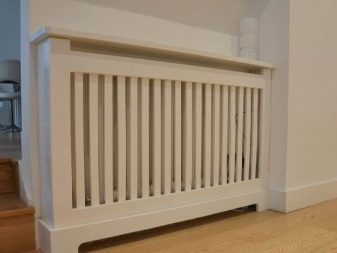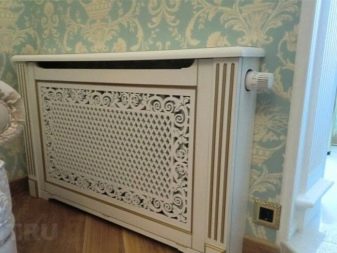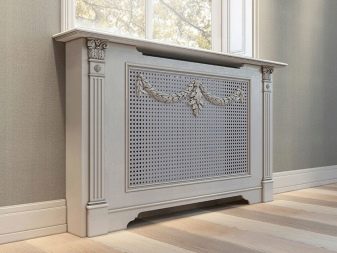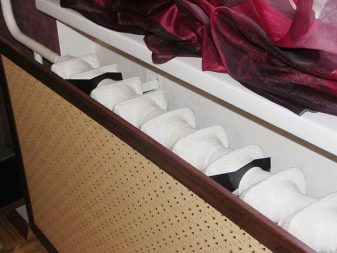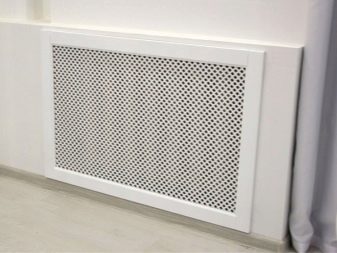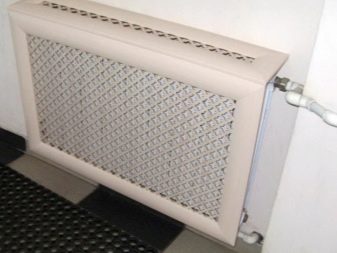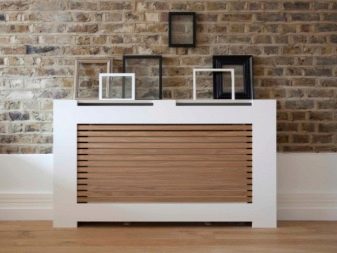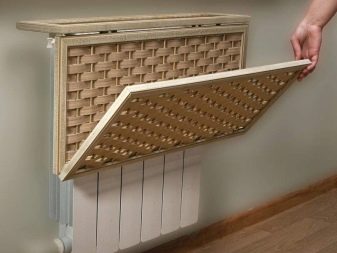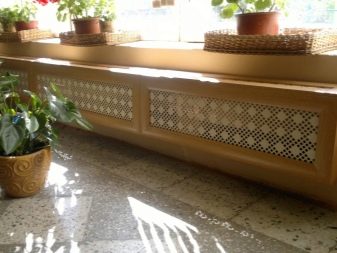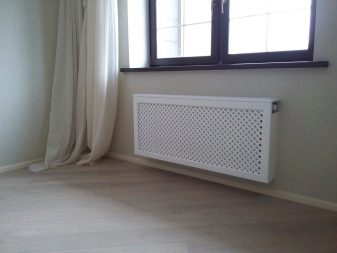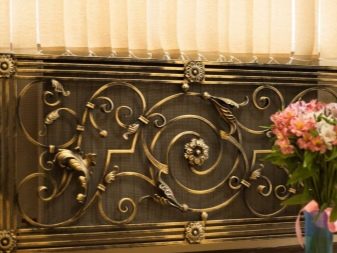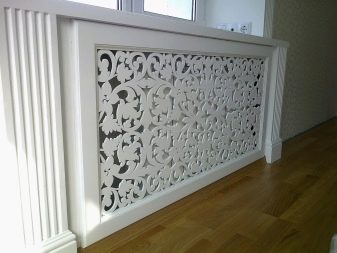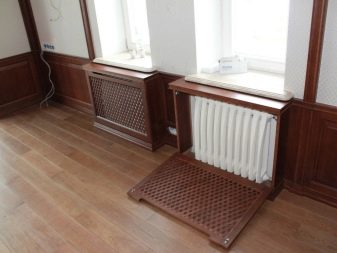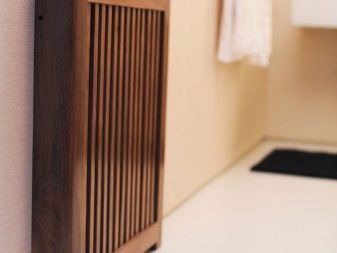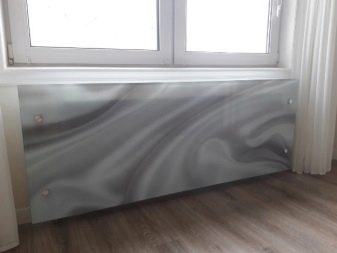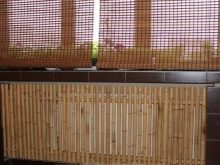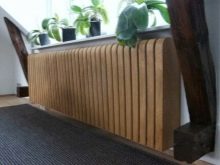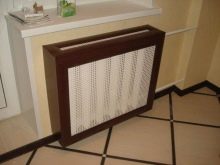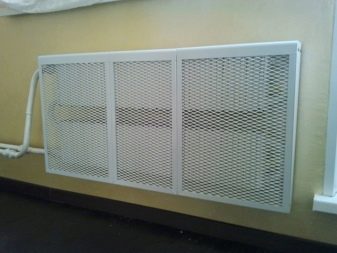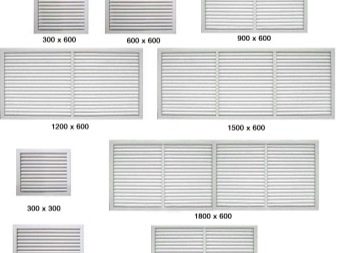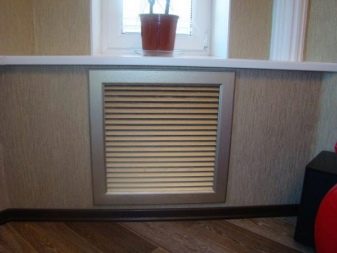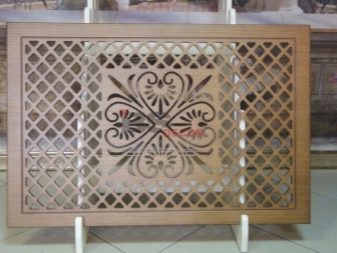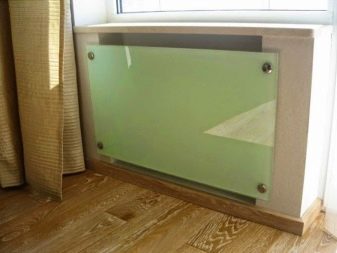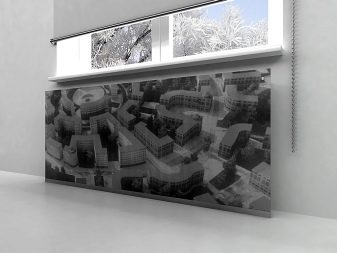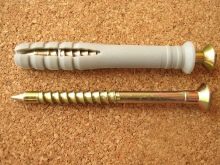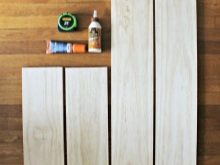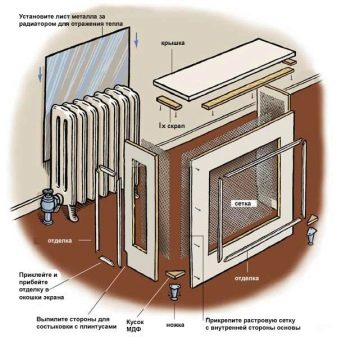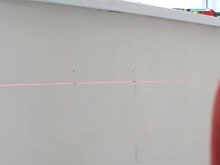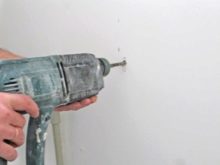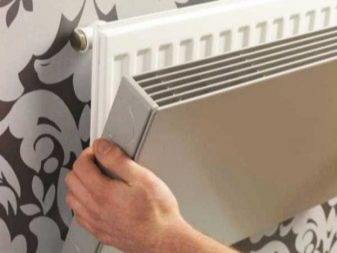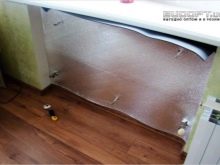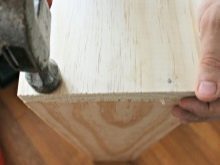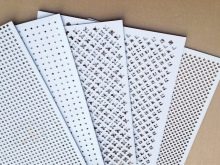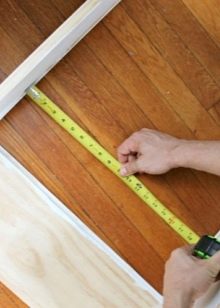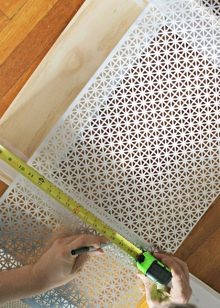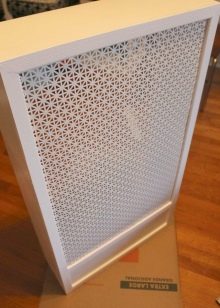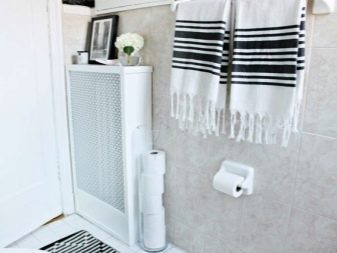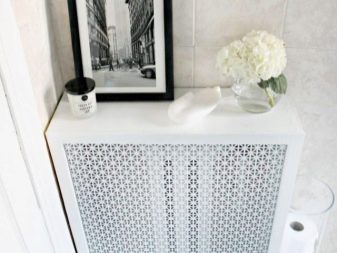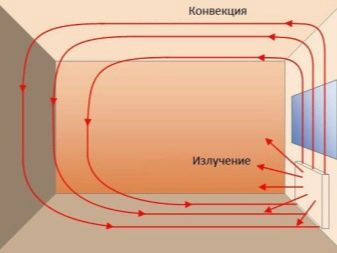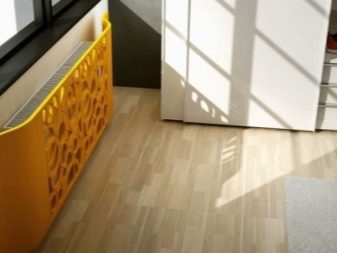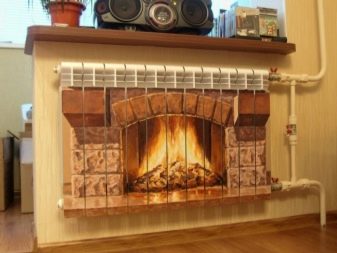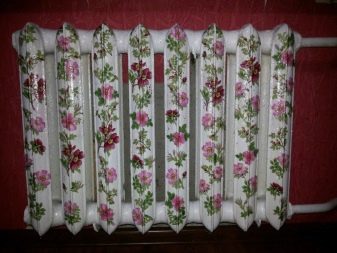The grille: what could be the screen on the radiator and how to install it correctly?
Heating batteries, mounted a long time ago, do not have an attractive appearance. The modern design of such units will help eliminate the problem of an unaesthetic type of radiator.
Element importance
The grille is needed to make the interior more sophisticated, but the screen on the battery should not reduce heat transfer. It is believed that even the most delicate and thin grille still reduces the amount of thermal energy transferred by the radiator. It is unlikely that the beautifully decorated, but the cold room will be comfortable, so the choice of the decorative grille option is an important aspect.
The main method of heating from the radiator is that the heat must move from the bottom and then go up along the radiator.Most of the heating systems work on this principle, so the selected radiator decor should not interfere with the classic circulation.
If the screens are perfectly matched and correctly mounted, they will not only provide a good look to the room, but also direct the warmth in the right directions. Therefore, radiator grilles sometimes contribute to a better efficiency of the heating elements.
The importance of the element also lies in the fact that He plays the role of protection from too heated radiators. Touching hot devices is not safe for young children - this is a positive argument for using decors of this kind.
Often inappropriate in the rooms are cast iron radiators. The screen for a cast iron battery is used most often. The method of replacing old cast-iron heating devices with beautiful modern versions is considered the most difficult. The task is largely simplified with the use of a shielding device or protective box.
Firms that manufacture screens, a lot. The number of different elements is also diverse. Many ordinary people are trying to make exclusive manual versions of products on their own.
In artisanal devices process adaptability is not taken into account, so products often turn into an obstacle to the passage of warm air.
An unfortunate option will contribute to the accumulation of air inside - as a result, the heat will return to the heating system.
This is allowed if the house is private, since the heat will still return, but to another room. If the house is multi-storey, then the heat will leave the tower to the neighbors.
In addition, the handicraft product is unlikely to be made of the optimal material, while dozens of varieties of factory-made products differ not only in shape, but also in the production material, which will provide good conditions for a particular room.
Craftsmen are trying to reduce heat loss with heat-reflecting film. It is recommended to glue on the front of the screen inside the panels.
To summarize the importance of installing screens on radiators can be the following points:
- hide radiators that spoil the design of the room;
- play the role of an additional decorative element, so it is important to choose the appropriate materials;
- Protect batteries from debris from them, so you need to provide accurate screen sizes;
- Protect children from burns and injuries, especially if cast iron batteries are used.
Design
Screen design is an important factor. But that the chosen option does not reduce the functions of the radiator battery, Some conditions should be considered:
- the facing base must conduct heat well;
- infrared rays should not remain in a closed space, and effectively go into the room;
- the internal surface of the structure should be dark, since the absorption of heat, as well as the heat release in this case will be better;
- the color of the outer side does not affect the quality of heat release - you can choose the shade that is most suitable for the interior of the room;
- A special screen with foil will contribute to the qualitative redirection of heat inside.
This accessory includes foam insulation. Such an element eliminates the warming up of the outer wall at the radiator attachment points Without heat redirection, heat dissipation is reduced. in some designs very significantly. Heat reflecting plates should be placed on the wall itself, behind the battery.. Decorative grilles are mounted in front of the battery.
In terms of efficiency and design, the unsuccessful option would be a solid panel with small air vents at the bottom and top.
The small openings of such a hinged casing will limit the flow of convection currents. In case of installation of this protection option, heat losses will increase, which means that the costs for heating the carrier for heating the room will increase.
The protective frame "accordion" will be acceptable, but also not very effective option. Although it is made of wide lamellae, it is covered with wide shelves at the top and sides. Good heat transfer will be only from one side - direct infrared rays will not contribute to blocking the cold that comes from the window.
From a design point of view, the model looks aesthetically pleasing if it is made of wood. The upper part of the shelf is convenient for placing potted flowers. But the lattice option is no better because of the poorly organized stream of warm air.
An optimal radiator screen is one that simultaneously sends heat up and spreads it into the openings at the edges. As a result, the cold from the window will overlap, and streams passing through the directional slots will heat the room.
Sometimes variants of radiator grilles complement the construction in the form of a visor. It is convenient in the case when the radiator is under the window sill. A narrow steel strip or a variant of MDF will not allow heat to accumulate and redirect it inside.
Another spectacular improvement is the injection thermal device. It helps to redirect the heat that accumulates between the installed décor and the fixture. The effect of the device is especially noticeable when the devices operate in winter mode.
A perfect grid with elements includes the following improvements:
- thermal insulation made of foil fixed inside;
- special top visor;
- special devices installed on the sides;
- carved lattice with a large perforation in the form of the front panel.
The design properties of screens and grids are connected by structural features.
There are some types:
- Box. It is used in the case when it is necessary to close, besides the radiator, also pipes.
- Hinged screen with upper visor. Perfectly camouflage the battery, over which there is no window sill, if the radiators are not recessed into a niche.
- Hinged unclosed screen needed for radiators that are installed in the wall or are under the window.
- Flat grilles needed for radiators that are inside niches or simply mounted in the wall.
Flat separate options on the legs will decorate the radiator, located under the window sill. They are usually decorated in the same style with the interior. Appearance as a result is similar to the usual screen.
Hinged options, mounted on protruding batteries, usually include two surfaces, which are located on top and from the front of the battery. At the same time, the side parts of the radiator remain free. The external carved part of the hinged cover is usually the same as in the first version, it is selected for the overall design of the room. The upper part is often used as a worktop.
The box is an imitation thumbs. Its additional surface is a convenient option for placing various decorative details. Often such boxes are made to imitate a fireplace.
Removable collapsible screens look interesting. Such designs will provide better access to the battery in the event of an accident. Also under the battery will be more convenient to clean.If it is located in a private house, then for the summer it is necessary to drain water from it, and by the winter season again to fill it with liquid. Drain media is easier to produce if the screen design is collapsible.
The design of the grids and screens depends largely on the bases used.
To choose the most appropriate look for the decor and quality, you need to understand in more detail the features of the products, since the heating temperature and the resistance of materials to constant heat are different. Sometimes users pay attention to the ecological safety of species.
Materials
Lattices on the cast iron battery are made of different materials. The most popular options are inexpensive metal devices. Usually for their manufacture is used thin sheet steel, which is applied paint. Operational terms are closely related to the quality of coloring.
Durability differs products, which are coated with enamel powder. This type of paint does not suffer from the effects of constant heat, does not change color from being close to a hot battery. From the point of view of physics, such a product has a positive effect on heating.
Metal grill quickly heatedthen gives off heat. If there is a good perforation, this device will not affect the decrease in heat.
Forged grilles have a special beauty.. Such elements are distinguished by a considerable openness, therefore they usually make a contrasting background barrier.
To keep the air circulation normal, metal sheets with fine perforations are chosen for the background construction.
Wrought-iron elements, of course, are beautiful, but they are quite expensive, so many homeowners are considering the option of wooden gratings and screens. Wood is beautiful and basically belongs to the basics of premium class. The product is plastic, allows to realize various stylistics and forms of devices.
However, choosing a wooden box, many people forget about perforation, which is also needed from the sides of the products. In these cases, it is absent. The radiator, closed from the side, will deprive the room of heat, and due to the properties of wood, it is well accumulated inside the box.
MDF and HDF panels are laminated sheets that are considered safe to use, and therefore are often used in children's and bedrooms.Bases are compacted fibrous parts of wood. During the manufacture of fibers used natural binder part, called lignin.
MDF material is well and long known to consumers for its quality characteristics. HDF panels differ in a pressing method. The increased pressure used on the lines makes the sheets thinner, but denser and more uniform. HDF is better than MDF keeps its shape. Thin sheets of HDF practically do not retain heat from the batteries, so they are considered the best option.
The plastic screen is most often used for sanitary purposes or in the kitchen. PVC products are hygienic, suitable for frequent washing..
If the slats are sloping, then this addition will not worsen the qualities of heating devices. In this case, in vain, many users are afraid to put plastic screens due to excessive overheating.
In the manufacture of modern screens used heat-resistant plastic, which does not respond to heating up to 80 degrees. When installing plastic screens, heating devices can lose quality only if the plastic screen has a cover and side solid walls.
Glass Screens appeared on sale not so long ago. They are beautiful in appearance but ineffective.from the point of view of physics. Usually, special tempered glass is used in the production of glass panels. The screens are matte, with a pattern applied to the surface. There are also white variants, which are often used in sanitary rooms, if the plastic version for some reason does not fit.
Recently, on sale appeared radiator grilles made from such exotic basics as bamboo and rattan. These items are suitable for design decorations - they are rarely used in familiar interiors.
Frequent option can be called combined screens. For example, a wooden frame is made, to which the decorative part is then mounted. Woven, fixed to such a framework, most often and are rattan or bamboo. More to these frames sometimes fix mesh from MDF or HDF, plastic parts are often used.
Due to the huge number of products, it can be difficult to figure out what is the optimal size for a particular type.
Dimensions
The most simple to install metal grilles. A variety of models allows you to choose the appropriate option for any interior.
For self-manufacturing metal grilles are complex. It is easy to buy a suitable version for the existing battery - the dimensions of the products are usually standard. The market offers a wide variety of options, differing both in size and cost.
Basically predominate following dimensions (given in millimeters): 400x600, 400h900, 400h1200, 400h1400, 400h2000, 600x600, 600h900, 600h1200, 600h1400, 600h2000, 750h600, 750h900, 750h1200, 750h1400, 750h2000, 900h900, 900h1200, 9,001,300, 900h2000.
For some interior designs, products are made by individual measurements., for example, when you need a panel that encircles a window sill. If the apartment has an exclusive battery or its location does not allow you to install a standard design, then it looks interesting.
PVC products are completely from this base or on a metal frame. For the price, those and other options are more affordable than all-metal gratings. Standard options offered by markets have the following overall values (indicated in millimeters): 600x300, 600x600, 600x900, 600x1200, 600x1500.
Of particular comfort and comfort of the apartment will add wooden products for radiators. The architectural style of such elements is different - it largely depends on the type of wood used in the product. Standard dimensions in height and length are (indicated in millimeters): 600x1300, 700x1300, 750x1300, 800x1300, 900x1300, 950x1300.
The finished manufactured products are covered with several layers of lacquer, but even in such processing, the grates are often afraid of temperature differences. Not all types of battery grids are suitable. Sometimes screens that consist of a wooden frame with a carved MDF panel stretched over it will be the best option.. Such products look very attractive, and at a price even cheaper than wooden counterparts. Heat transfer from them is comparable to metal products.
Manufacturers offer a choice of many options for patterns. It is best to choose gratings with ornaments, in which large holes are observed.
The price of MDF lattice stretched over a wooden frame is much cheaper than the cost of a fully wooden product. The size range is as follows (indicated in millimeters): 400x600, 400x900, 400x1200, 400x1500, 600x600, 600x900, 600x1200, 600x1500.
Glass panels are usually flat screens that are fixed to the wall with anchor bolts. But These screens are not suitable for all types of panels.
Another negative quality of glass screens is a limited selection of standard colors, although custom-made products feature a variety of decors. At cost, glass options are cheaper than wooden analogues.Approximate indicative dimensions are similar to wood products.
In the care of glass products is easier, but it is more convenient to install wood panels with your own hands.
How to install?
Any work associated with the installation of devices requires the preparation of the necessary tools: tape measure, hammer, drill, ruler and pencil.
You may also need fittings:
- hardware mounts;
- screw nails;
- ordinary nails;
- special corners;
- dowel;
- special glue.
The classic grille looks like a three-sided box with legs in its lower part. All parts are fastened according to the scheme, which is usually provided by the manufacturer with their products. According to the scheme it is more convenient to fasten products and then hang the finished version on the battery.
Connecting the structure with corners will give it greater rigidity.. You can use a simple wood glue.
Fasteners for the hinged structure are installed in the wall - usually two holes are enough, into which the dowel-nails are inserted. Screws are needed to fasten the sides, which are often not supplied with the necessary holes for pipes.If necessary, they can be measured with a ruler and mark with a pencil. Cut holes more convenient jigsaw. But in the absence of an electric tool, you can use a regular hacksaw.
Anchors or special hook-shaped fasteners are inserted into the wall anchors fixed to the wall. The screen with the box is more convenient to attach to the hooks.
The front panel is fastened with small nails. Sometimes to improve the appearance of the structure has a frame frame, which is fixed on top of the frame with glue. Sometimes homemade screens glue the wallpaper, suitable to match the basic.
A removable screen mounted on the battery is considered a great solution.. Thus, the radiator will be easier to clean if necessary, as well as easier to get to the valves, which can regulate the temperature. Before drilling holes for suspensions on the screen, it is better to mark their locations with a pencil - only after determining the exact location, you need to hang the screen to a permanent place and screw in retaining screws.
It should be noted that the heat-reflecting screen behind the radiator must correspond to the exact dimensions of the box or the external screen that is hung in front of the battery.
The heat reflecting substrate is fixed with glue to the wall with the foil facing out. In the works related to the installation of the screen may be useful, and other tips and tricks.
For example, the simplest version of the grille can be made independently. For this useful chipboard, which can be painted and varnished. For the screen itself need sheet grid. To make it, you need to measure both sides of the heater, then add about 5 cm to the resulting height, and about 10 cm to the width. The front frame can be cut from the prepared sheet of chipboard.
For the construction of the sides you need to measure the depth of the radiator and add to the resulting distance of about three centimeters. The height of the structure must also be taken into account in view of the overlap. The upper part should correspond to inlet depth measurements.
Cutting parts should be done only after all the measurements. The prepared parts are easily joined with furniture nails or wood glue. The facade of the grid should be similar in size to the frame.
Unsightly edges of MDF can be decorated with a plastic profile. As sidewalls of the screen in some cases, the usual bars - they do not require additional fasteners. For frameless screen, anchor collets are better suited.
Even easier to install the screen, made on special legs. With further operation, such a design does not seem reliable. However, to make this option will be faster, and the cost of its implementation will require small.
Due to the fact that the design on the legs will not affect the air circulating inside the structure, This option is often recommended for installation in rooms with insufficiently heated media in batteries.
Tips and tricks
Properly mounted foil material behind the radiator will definitely increase heat transfer. For decorating the device in the nursery or bedroom is better to use gratings made from natural bases. For example, it is worth considering wooden options or options from MDF. A good solution would be an independent production of the structure from old furniture.
Converter-type radiators are not recommended to be closed with decors, otherwise an air outflow will occur.
It is important to understand that the main types of batteries emit two types of heat:
- radiant;
- convective.
The first option refers to the form of direct infrared rays. Low temperature carriers give a zero indicator of this energy. However, at battery temperatures above 60 degrees, the value of radiant energy cannot be disregarded - it is this part of the heat that is lost when radiator grilles are installed.
Converter grids worsen the converter component as well.. However, the right choice of decor options can reduce losses to zero.
If the selected item fails, the heat masses will remain inside, and the heating of the room will deteriorate.
Looks great alternative way to decorate batteries - decoration paints: on radiators you can apply a drawing with the help of an oil watercolor. To create an image of 3D parts, patterns are applied not only to the radiator itself, but also to the wall.
As a result of the creation of such a work of art, the front part of a radiator battery (for example, cast iron) and the vertical are conventionally one plane.
The selected option grille should be not only beautiful and reliable, but also convenient for parsing.Repair or replacement of the heater should not be complicated by installing a grille. It looks interesting radiator protection, when it is in harmony with the general appearance of the interior - against the background of the general situation, this design should not stand out.
When choosing a plastic decor, its toxicity should be considered - in such a room it is important to ensure constant access of fresh air.
It is undesirable to overload the decorative screen with furniture., since in this case not only the heat exchange mode will be disturbed, but also the beauty of the decor will go unnoticed. The screen, in particular its facade, must have perforations - openings will provide the best mode of air circulation.
Installing the grille implies compliance with certain standards. For example, The allowed minimum distance from the radiator should be 3 cm. It is necessary to add 10 cm in width, and about five in height.. Thus, the grille for a standard radiator (height 80 and length 200 cm) will have dimensions of 85x220 cm. If the side parts are provided, then their width should not be less than 30-40 cm.
From the presented products with standard parameters, a metal product of 900x2000 mm or a wooden analogue with identical dimensions can be considered a suitable option,but with the price a little higher.
How to assemble a decorative screen for the radiator, see the following video.

